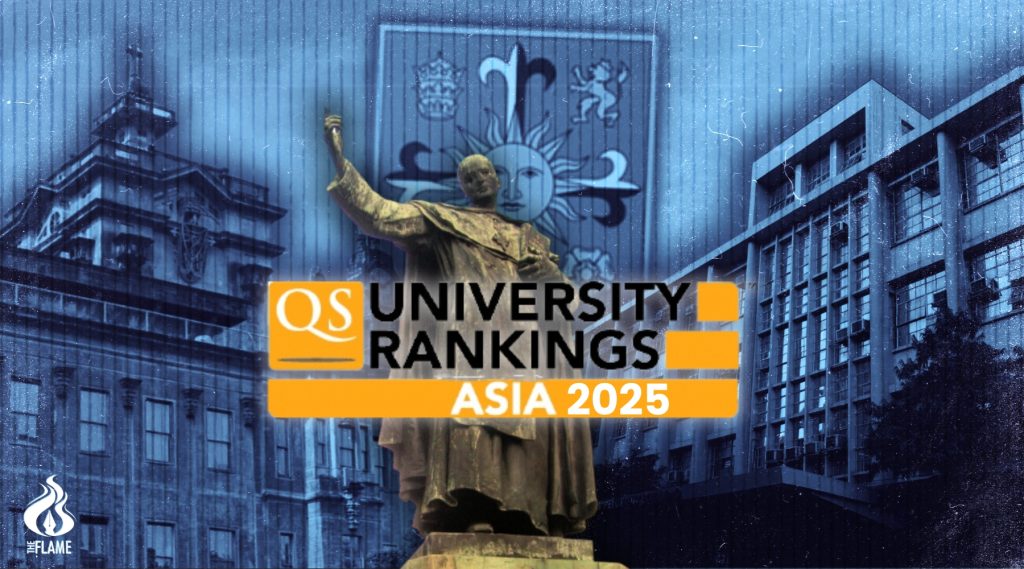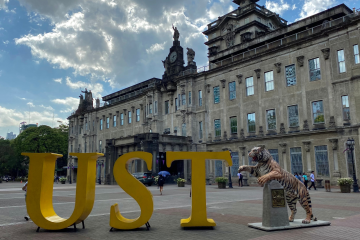
THE UNIVERSITY of Santo Tomas remained the country’s fourth-best institution but fell two notches overall despite showing improvement in the Quacquarelli Symonds (QS) World University Rankings: Asia 2025.
In the latest edition of the assessment, UST improved its overall score to 42.0 from 28.7 but fell to 181st in the region from 179th previously.
The Espana-based campus was among the top four Philippine universities which all saw a lower overall ranking this year.
The University of the Philippines was still the highest-ranked institution in the country despite dropping eight spots in the region to 86th from 78th. It was followed by Ateneo de Manila University (142nd from 137th) and De La Salle University (163rd from 154th).
The following Philippine universities drew a higher regional ranking this year:
- Adamson University (411-420 from 551-600)
- University of San Carlos (481-490 from 551-600)
- Polytechnic University of the Philippines (541-560 from 551-600)
- Mapua University (561-580 from 601-650)
- Siliman University (601-620 from 601-650)
- Far Eastern University, Manila (681-700 from 601-750)
Of the 25 assessed Philippine universities, QS welcomed nine newly-ranked institutions in the 2025 edition, namely Central Mindanao University, Cebu Technological University, Central Luzon State University and Central Philippine University, which all landed within the 851-900 bracket, West Visayas State University, Angeles University Foundation, University of Southeastern Philippines, University of Science and Technology of Southern Philippines and University of Southern Mindanao, which all ranked 901+.
The institutions were evaluated according to their academic (30%) and employer (20%) reputation; faculty-student ratio (10%); international network (10%); citations per paper (10%); and papers per faculty (5%) ratio.
Other indicators were staff with PhD (5%); proportions of international faculty (2.5%) and international students (2.5%); and proportions of inbound (2.5%) and outbound (2.5%) exchange students.
UST was the country’s best performing university in international faculty, receiving a ranking of 71st in the region. It was also the leading Philippine institution in terms of inbound and outbound exchange with an overall ranking of 78 and 23, respectively.
“University of Santo Tomas is one of the Philippines’ most international institutions. It boasts the country’s best student exchange programs, achieving the highest rank in any individual metric in Outbound Exchange Students, in which it places 23rd,” QS senior vice president Ben Sowter said, noting that no other Philippine university placed in the indicator’s top 300.
UP emerged as the best university in the country for academic and employer reputation, as well as faculty student ratio and international research network.
Adamson University topped both the international student and citations per paper indicators, while Mapua University was the country’s top performer for papers per faculty. Meanwhile, West Visayas State University was the country’s leading institution in staff with PhD.
Peking University in China was the top institution in Asia, followed by The University of Hong Kong, National University of Singapore, Nanyang Technological University, Singapore and Fudan University in China.
Key hurdles
Following UST’s 71st spot in international faculty among Asian schools, Sowter highlighted Philippine universities’ performance in the metric as an area for improvement, saying there was “a sharp drop-off” in the country’s next ranked university, which only placed 386th overall.
According to Sowter, while the Philippine universities showed strong reputation among international employers, the country faces “key hurdles” in personnel and research.
“Investing in high-quality staff will provide a solid foundation from which to tackle these challenges, bolstering the quality of its research output and further enhancing its international reputation,” he said, noting that a focus on international recruitment would boost innovation and international partnerships.
The Philippines has shown improvements in five metrics: academic reputation, employer reputation, papers per faculty, inbound exchange and outbound exchange, with more institutions posting higher scores in the indicators.
In its 16th edition, QS welcomed an additional 127 institutions, totaling 984 ranked universities across 25 countries.
Launched in 2004, the QS World University Rankings annually presents a portfolio of comparative data that assesses the performance of universities across the globe. F



